Once you've published your book, how exactly do you get it to readers? Today, the Alliance of Independent Authors AskALLi team is examining the fourth process of publishing: book distribution. An overview of the seven processes can be found in this post. The rest of the processes can be found here:
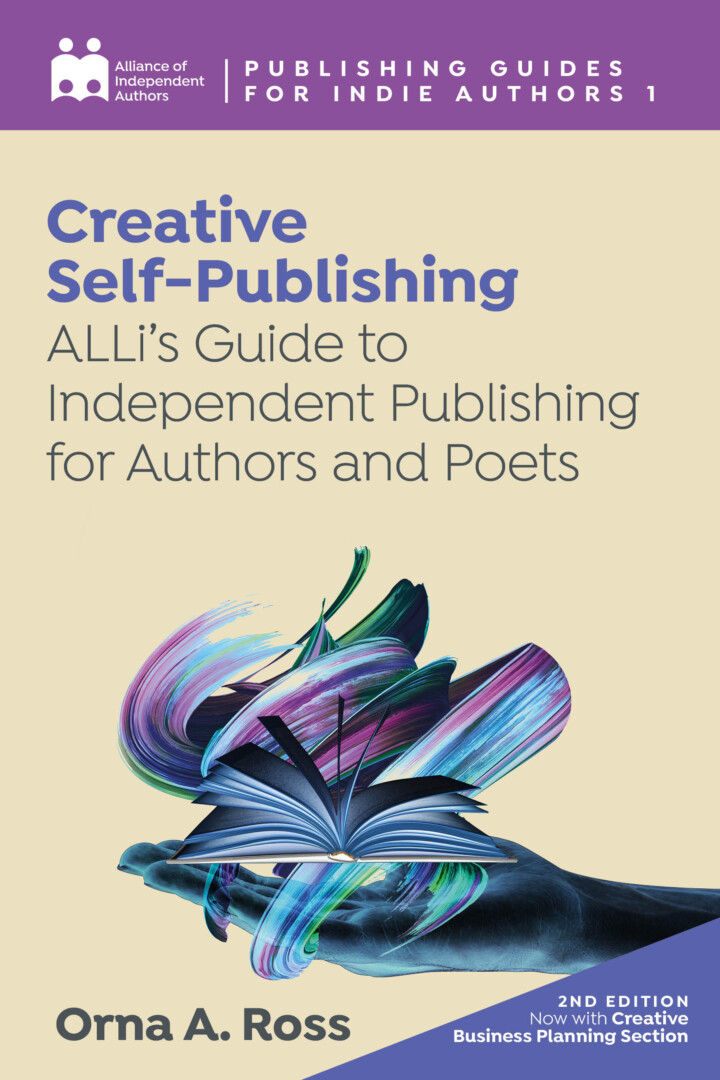 The below is adapted from our ALLi guide Creative Self-Publishing. ‘This book is available for purchase in multiple formats in our bookstore. Members enjoy free access to the ebook.
The below is adapted from our ALLi guide Creative Self-Publishing. ‘This book is available for purchase in multiple formats in our bookstore. Members enjoy free access to the ebook.
What is the Distribution Process?
Distribution is the process of making your book available for purchase. It is your supply system—how you make your books available to book wholesalers and retailers in various formats. We are fortunate as authors today to have excellent distribution options across the three book formats of ebook, print and audio, but getting your distribution channels set up across these three formats can be confusing to begin with.
What is a Distributor?
A distributor, in its most general sense, is any company that provides products to retailers or libraries instead of directly to consumers. Distributors handle the logistics of shipping and delivery, manage billing on the author’s behalf, and in some cases act as the sole vendor from which retailers can obtain your book.
Many companies act as both publishers and distributors, producing books as well as making them available to various retail venues. However, the majority of these distributors are actually wholesalers, passive suppliers who only respond to book orders, as opposed to active distributors who have a sales team dedicated to placing books with retailers.
What is a Wholesaler?
Although the term “distributor” is used to refer to both types of service, understanding the distinction between a passive wholesaler and an active, sales-oriented distributor is crucial. A wholsalers work for the book buyers–bookstores and other businesses. A distributor works for the publisher, in our case the author.
What is an Aggregator?
An aggregator is a service that provides books to multiple distributors, giving authors access to potentially thousands of retailers from a single point of entry. It’s a great way to widen your books’ availability without incurring the overhead of dealing directly with a multitude of services.
Aggregators are most common in ebook distribution, as the electronic format is particularly well suited to this kind of arrangement. Authors upload their ebook file (or a manuscript to be converted), and then select the networks and retailers they wish to distribute their book to.
Aggregators may charge a flat fee or a share of royalties (typically 10% of the sales price) for this service.
ALLi Policy on Book Distribution
ALLi’s guiding policy for the most effective book distribution plan is to be in as many formats as you can—ebook, print and audio—and in as many stores as you can, while making your own website the core of your bookselling operation.
Publishers and Platforms
If it’s your first time to produce and distribute a book, you may find yourself confused by the different parties involved in book distribution: publishers, platforms, wholesalers, distributors, retailers. Let’s clarify under two headings: Business to Business (B2B) and Business to Consumers (B2C). Business to Business: B2B
- a publisher is a business that invests in a book with the intention of making a profit. You, the author, are the publisher unless you choose to license your publishing rights to a third party.
- a platform is a digital service provided by a company for production, distribution or sales, or all three.
- wholesalers, distributors, bookstores (including online stores), ebook aggregators, and libraries are distribution channels.
- the companies or platforms that publishers, including self-publishing authors, use for production, printing, distribution, marketing and so on, are all publishing services, hired by the publisher either through an upfront fee or a percentage commission on sales. Some publishing services like IngramSpark and Kobo Writing Life are also distributor channels, through their global business partnerships.
Business to Consumers: B2C
- All of the above are B2B (business to business) companies. Businesses that sell books to readers (B2C: business to consumer), are retailers, and include physical bookstores, online bookshops and author websites.
- Some platforms like Amazon KDP, Apple Books, and Google Play are self-publishing services and retailers, with their own online retail stores where readers can purchase books.
Book Distribution for Authors
Below are the categories of sales channels and stores that you need to know about, however you decide to publish or distribute.
- Major global distributor-retailers who both distribute and sell e.g. Amazon, Apple, Google Play, Kobo, Barnes & Noble.
- ebook aggregators: e.g. Draft2Digital, PublishDrive, StreetLib. Aggregators allow you to upload your book onto one single dashboard which then automatically distributes it to multiple distributors and retailers. Through aggregators, we get access to channels that authors cannot approach directly, e.g. Scribd, a digital subscription service deducts a further percentage. Each aggregator has pros and cons and some indies use a variety of them in combination.
- Reader subscription services: e.g. Amazon’s KU and Audible, Kobo Plus, Scribd, Bookmate, Storytel, 24symbols. As with every other form of entertainment, books are now being made available by subscription services that charge readers a monthly fee for unlimited titles. Subscription services give readers a huge library for the price of one book.
- Library providers: e.g. OverDrive, Bibliotheca, Hoopla, Mackin, ODILO. Just in the US, there are roughly 135 million potential readers yearly who you can reach if you distribute to libraries. In the US and Europe, there are roughly 160 million people you can reach by using OverDrive services.
- Regional services: e.g. Tolino (Germany), DiBook (Slovakia/Hungary), BookBaby (US). If you are a native English-speaker you might not be aware of how many people outside of your home country read in English. In Europe, those who are not native speakers but read in English tend to be avid readers, often English majors or teachers.
- Print distributors: Most notably Amazon KDP Print, IngramSpark, Lulu and Bookvault.
Book Distribution Recommendations
ALLi’s book distribution recommendations are based on the approach that is most likely to succeed in creating a sustainable publishing business, over time. It is not a quick-and-easy approach. Many authors choose other options, most notably those who publish exclusively to Amazon. Lots of authors, particularly those who publish wide, get admin help with their distribution tasks, to leave them free for writing and marketing. If you do this, ensure that all dashboards are in your author name and that the payments go directly to your bank account, not that of an intermediary service or agent.
ALLi Recommendations: eBook Distribution
To avail of the best financial return on the widest possible distribution of your ebooks, time permitting, ALLi recommends that you upload directly to the ebook Big Five (Amazon’s KDP, Apple Books, Barnes & Noble, Google Play, and Kobo Writing Life), and use one or more ebook aggregators to cover the rest of the world. The benefits of uploading directly to the big retailers include:
- faster payments
- up-to-date sales figures (important for measuring the effectiveness of marketing)
- more direct control of metadata (particularly categories and keywords which are important for discoverability)
- the ability to manipulate pricing quickly and easily (important for promotion)
However, each of the ebook retailers has different dashboards and requirements, so going direct can be time-consuming, especially if you have a lot of titles. Aggregators like PublishDrive, Draft2Digital and StreetLib will take a cut for handling the different outlets for you, but they will save you time. Time is a key consideration for indie authors.
It’s also worth noting that not everyone can go direct, even if they want. The US and UK are best served, but options vary widely around the world. Apple famously requires self-publishers to use a Mac to upload, which is inconvenient for authors who use other devices.
Even if you use all of the Big Five distributors, it makes sense to also use an aggregator distributor. They will reach parts of the world you can’t reach any other way. Although at the moment, these other markets are smaller and account for a negligible proportion of sales, they help to increase your visibility and the set-up takes very little time.
More promisingly, they are also growing much more rapidly than the more mature North American and UK markets. There is an advantage to being there first. If you use those five for your ebooks, together with Amazon KDP Print, Bookvault, and IngramSpark for print as described above, and ACX and Findaway Voices, Author’s Republic, Soundwise or similar for audio, you have covered the channels that account for 97% of ebook, print book and audiobook sales around the world and maximized your income potential from your books. Stress on potential! Distribution alone rarely sells books, except in very nascent markets. Books must be marketed and promoted to sell.
ALLi Print Book Distribution Recommendations
Amazon KDP, Bookvault, and IngramSpark (IS) are the two most influential players in the self-publishing arena.
Amazon controls book sales to more readers than any other single entity in the world, including the largest publishing houses. The company sells about half of trade-published books and an estimated 70% of self-published books (the latter is harder to quantify as not all self-published books show up on current data measures—e.g. those sold directly by authors to readers, and those sold through unregistered global retailers).
From an author’s perspective, access to KU is had by being part of KDP Select, the Amazon exclusivity program for indie publishers. If you sign up to this, you cannot publish your ebook version on any other website for ninety days (though you can then decide whether to renew or cancel the arrangement). In return, you are included in KU, Amazon’s subscription model, and, get paid from the KDP Select Global fund, paid based on how frequently your book is borrowed. KDP Select authors have access to other promotional tools for the length of their enrollment.
Ingram began as a wholesale company in the US, warehousing books for publishers so that stores and libraries could purchase through one vendor. It now provides distribution to 220 countries and territories. Although Amazon KDP also does print-on-demand through KDP Print, IngramSpark is the dominant supplier to most bookstore and library accounts around the world, many of whom are uncomfortable stocking Amazon-supplied books.
IngramSpark also serves as an aggregator for ebook distribution, but its reach for ebooks is not as wide and its terms not as favorable as other aggregators like PublishDrive, StreetLib or Draft2Digital. It is IngramSpark’s print operation that makes it so valuable to authors and ALLi recommends IS only for print.
Bookvault is a newer service on the market. They currently have printers in the UK and USA, and provide authors with services to create special edition books as well as regular print-on-demand copies.
IngramSpark, Bookvault, or Amazon for Print?
If you want to reach most readers and maximize income, ALLi recommends publishing your print books simultaneously on KDP Print, Bookvault, and IngramSpark. All platforms fulfill print orders in pretty much the same way, so why all? Each offers different benefits—and you want the best of both worlds.
Publishing through KDP automatically includes you on Amazon’s storefront in all the territories it serves with print (an extensive list, if not quite as long as the list of territories served by ebooks). And at terms that are more favorable than for other booksellers. KDP Print does not charge a distribution fee and only charges you commission when someone buys your book.
So why bother with IngramSpark and Bookvault? IngramSpark does not have a storefront itself, but its distribution catalog reaches beyond the internet to brick-and-mortar bookstores and libraries. These outlets are unlikely to order stock from Amazon, because most bookstores see them as competition and the discounts are not commercially viable.
As for Bookvault, they have a plugin that, once added to your website, allows you to sell print books through your website too. Besides, their distribution network is also growing around the world.
If you're interested in how to gain access to bookstores, you can read our guide Your Book in Bookstores.
In short: If you upload your print book to KDP Print, Amazon will always list it as in stock. If you also upload to IngramSpark, it is available through their catalog to thousands of bookstores around the world for one-off orders, and also to libraries. Both is best. This is not as complex as it might sound. You set up an account on each store and upload pretty much the same files and metadata to each. There are slightly different requirements for cover artwork and interiors, but it’s just a question of tweaking the original rather than reinventing it. Find out more in the blog post on IngramSpark and KDP Print.
Indie Author's Guide to Book Distribution: ISBNs
The ISBN (International Standard Book Number) is an essential tool in the publishing business. A unique product identifier of a specific edition of a book in a single format, it provides a key to a book’s metadata. Books published in multiple editions and formats need a separate ISBN for each one. Major changes to a book in any format require a new ISBN.
Searchable online, ISBNs help all parties in the supply chain to find, order, distribute and sell books, and to analyse sales and author earnings. Because the ISBN is entirely numeric, it is universally understood in any language.
All ISBNs are managed by the International ISBN Agency, which appoints just one official agency per country or territory as the unique ISBN supplier. In some countries ISBNs are supplied free of charge, and in others they must be paid for. In territories where a charge is made, ISBNs may be bought singly or in batches, usually with a significant economy of scale.
The owner of a book’s ISBN is its official publisher, therefore indie authors must buy their own ISBNs if they wish to go on record as the publisher of their books.
Owning and using ISBNs correctly will help indie authors reach more readers both online, beyond Amazon’s customer base, and offline, including physical bookstores and libraries. It will also enable their books to be included in industry surveys.
To find out all you need to know about ISBNs, download your copy of the AskALLi Short Guide to ISBNs:
Members: download your free copy by logging into membership website. Non-members: buy your copy via the the ALLi Bookshop.
ALLi Audiobook Recommendations
The fact audiobooks are big business is not new information. But did you know that the global audiobook market is expected to grow from $3.3 billion to $15 billion by 2027? For a long time, Amazon’s ACX (Audiobook Creative Exchange) the self-serve production and distribution service for Audible, was the only audiobook publishing option available to indie authors, and it is still one of the most widely used distribution services, but that is changing rapidly. If you'd like to read more on self-publishing audiobooks, you can read our ultimate guide here. There are several distributors operating several different models e.g. cost per checkout, credit-based subscriptions, revenue pools. You need to have some understanding of these models to understand your audiobook payment statements.
Subscription Services
- Credit-based subscription: listeners pay a monthly subscription fee to get “credits,” which they can redeem against audiobooks. Authors earn the same royalty as an à la carte sale when their audiobook is purchased using credits.
- Unlimited subscription: listeners pay a monthly subscription fee to listen to as many audiobooks as they want. Authors earn the same royalty as an à la carte sale when a subscriber listens to 15% or more of their audiobook.
- Revenue pool share subscription: listeners pay a monthly subscription fee, contributing to a total “revenue pool”. Authors receive a percentage of that revenue pool based on their pro-rata share of total listening time.
Audiobook Creation Exchange (ACX) ACX offers authors exclusive and non-exclusive options for distribution to three outlets: Audible, Amazon and Apple Books (previously iTunes).
- Exclusive to ACX. This option prevents you from distributing or selling your audiobook through any other channel—whether that’s another retailer, a subscription service, directly on your website, or even in physical CD form. In exchange for your exclusivity, ACX pays a percentage payment of 40% of the list price.
- Non-exclusive. This allows you to distribute your audiobook elsewhere in any form you want but your percentage payment will only be 25% of the list price on ACX. If you choose to produce your audiobook under ACX’s royalty-share with a narrator option, you will automatically be enrolled in the exclusivity option—and will not be able to get out of it unless you “buy out” your narrator.
Under advocacy pressure, ACX changed its terms to allow authors who own the full rights to their audiobook to get out of exclusivity after 90 days. This doesn't apply to books produced under their royalty-share agreement. Whether you're exclusive or not, there's one crucial element you can’t control on ACX: the price of your audiobook. Some retailers change the price you set for your books at their discretion, but pay the commission you would’ve received before the discount. Only Audible frequently discounts its books, without any reference to the publisher or any compensation. The typical discount is 30% but it can be more.
ALLi strongly recommends audiobook authors not to take up ACX’s exclusivity program. Firstly, the compensation mechanism is extremely opaque. Payment spreadsheets have few data points and it’s impossible to know if you’ve been paid correctly. ACX also charges authors for returns, even when they are not true returns (where the reader has consumed 10%, or less, of the book), and even where the company has itself encouraged the listener to “exchange” the book, after reading. To add insult to injury, they were doing this secretly, until outed by an enterprising indie author Susan May, who started a campaign (Audiblegate.com) to alert other authors, narrators and rights holders to what was going on.
ALLi recently downgraded ACX/Audible's rating to “caution” due to mishandling of author payments on the platform, and continued lack of transparency, accountability or recompense. Many authors are currently moving away from ACX, despite it having the largest cohort of listeners, and exploring other distributors as opportunities expand.
Libraries, Kobo and Wide Audiobook Distribution
Many other audiobook distributors offer authors a strong alternative to ACX and a greater reach into the many audiobook retailers, subscription services, and libraries around the world.
With wide audiobook distributors, you can choose your own retail price—which all non-Amazon retailers will respect. This opens price promotion opportunities, free first-in-series or prequels, and other discounting possibilities. It also opens up Chirp, a sister site to the popular ebook discounting platform, Bookbub, which offers similar discount marketing emails for audiobooks, handpicking selected audiobook deals and promoting them to a growing list of listeners.
While often overlooked, libraries can play a big role in audiobook discoverability and revenue. In the USA and UK, libraries purchase a license to lend an audiobook to a maximum of one patron at a time. Publishers are paid every time a library patron borrows the audiobook, with the pay per checkout depending on which distributor the library uses (Hoopla and Overdrive are two of the most popular), the length of the audiobook, and its library price—which is usually more than the RRP (the recommended retail price).
Uploading your book to Kobo Writing Life distributes audiobooks to a network of publishing and library partners, including Bol (NL), Booktopia (AUS), Indigo (CA), Overdrive (library distributors), and Walmart (US), as well as putting it directly on sale at Rakuten Kobo. To maximize your income from audiobooks over the long term and across the world, ALLi recommends using Kobo to distribute directly to their retail partners, and ACX for Amazon, Apple and Audible, then using the aggregators for the rest.
Aggregators: Findaway Voices, ListenUp, Author's Republic
Findaway Voices (now part of Spotify) is one of the leading audiobook aggregators, with a distribution network that reaches over 170 countries around the world. The platform also offers a royalty-share option with narrators, Voices Share, and other audiobook creation tools through Voices Marketplace. And they offer seamless integration with the ebook aggregator Draft2Digital, so you can carry over your metadata from there, if you use that service.
Findaway Voices pays authors 80% of the income received from their distribution partners. That income can vary greatly depending on the partner's retail model (straight sale vs. subscription service vs. library). Most non-Amazon major retailers pay between 40% and 50% of list price. After Findaway's distribution cut, this represents a net payment to the creator of 32%-40% of list price. For sales through Amazon or Audible, Findaway receives 25% of the list price, giving the author 80% of that 25% (equivalent of half of an exclusive sale through ACX).
Listen Up and Author's Republic have both been around for longer than Findaway Voices, running a similar business model but with slight differences in reach, services and payment models. ListenUp charges a $149-$199 upfront fee per title for distribution—which they waive for titles produced through ListenUp. Author's Republic don't offer audiobook creation services, focussing exclusively on distribution. They accept submissions from anywhere in the world, so they are a good option for authors in countries not supported by other major distributors. ACX is not yet functioning in Australia, for example. Author's Republic take a larger commission on sales—30% so you receive 28%-35% of list price on most non-Amazon store sales, and 17.5% on Amazon/Audible sales—but as an ALLi Partner Member they are open to matching competitor rates for some ALLi members (depending on your books, catalog etc.). If you’re interested in using this provider, it’s worth asking.
PublishDrive
PublishDrive is the only aggregator in this list that also offers ebook and print-on-demand distribution, which has the advantage of allowing authors to control all of their different distribution needs from one place. Another advantage is their access to CNEP Reading, the leading library content provider in China. Their business model is subscription based. PublishDrive charges publishers a monthly fee and then pays over 100% of income received. The fee depends on the number of titles distributed, with each format (ebook, print, audio) counting as a separate title.
Soundcloud and Soundwise
Authors who want to sell audiobooks directly, and build a listenership on their own websites, need an audio hosting tool. Two of the best are SoundCloud and Soundwise. Both provide audio hosting and act more like content creation tools than retail services. While Amazon and Spotify are product focused, Soundcloud and Soundwise are content focused. Soundcloud began as a home for musicians and is like a YouTube for audio. It’s a good place to create and offer samples of your work for listeners to try out, or to create advance copies to send to your street teams or reviewers. Listeners can leave feedback and star ratings. Soundwise is a much more authorcentric platform, which can similarly be used for hosting and listener feedback, but also offering promo codes, analytics, and a payment facility, if you need one. A direct-to-consumer platform like Soundwise is a great tool to experiment with marketing strategies to optimize your funnel for future sales, as you have full access to analytics.
Optimising Audiobook Distribution
Should you sell through a large platform like Audible, go wide, or sell more directly using a tool like Soundwise? At ALLi, we think the answer is the same as for ebooks and print. Not either-or, but both. Marketplace platforms like Audible, Kobo and Findaway can potentially provide you with new listeners and should not be ignored unless you have strong personal reasons to do so.
Adam Beswick on Book Distribution Through Tiktok Shop
The AskALLi team spoke to Adam Beswick about how he uses TikTok shop.
Adam Beswick is the author of Arthurian retellings. Find out more about him on TikTok and his website.
 Q1. How do you distribute books using TikTok?
Q1. How do you distribute books using TikTok? ALLi Member MK Williams
M.K. Williams writes suspenseful literary fiction for the contemporary reader. Find out more about her on Youtube and Instagram.

How do you distribute your eBooks?
I use Amazon KDP, Smashwords/D2D, Google Play, and PayHip. I started out as a Smashwords author and later thought Draft2Digital might have been better. I didn’t want to spend the time and effort to migrate my books over. Thankfully D2D acquired Smashwords so they’ll do the migration for me.
What aggregators or systems do you use to get your books out into the world?
I use IngramSpark for wide print distribution, Smashwords/D2D for wide eBook distribution, and my audiobooks are wide with ACX and Findaway Voices. I aim to go direct with Amazon (50% of my sales are from this retailer so I want to earn more where I can), then I use the aggregator with the widest reach to get me everywhere else.
Are you exclusive to any platform?
Nope. I prefer being able to have my books out wide. I also want to have the most control over my books and find I can pivot easily if I am not exclusive. I still have one early audiobook in a royalty share deal with ACX, that is my only exclusive contract. I learned a lot from that mistake. I am planning to launch a pen name for romance books, I will leverage Kindle Select at that time for those ebooks only.
Do you distribute through your own website and if so, what companies do you use to help facilitate this?
Yes, I leverage PayHip as my direct storefront. I sell my digital books (eBook and audiobooks) as well as autographed copies of my print books and bookplates.
Do you have any tips for working with the distributors more effectively?
My best tip is to always be specific and have a plan. If I have an issue with a retailer link, I know which aggregator is distributing my book to that platform. I always have a set checklist of which platform I upload to and when. Taking the time to plan and be very clear and specific saves me headaches when glitches inevitably arise.

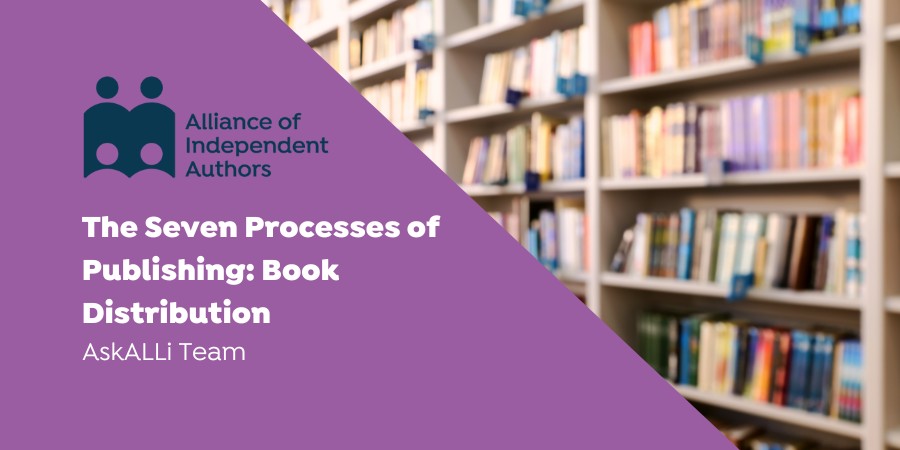
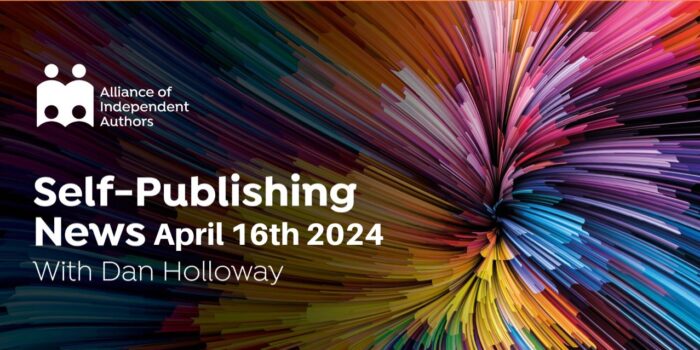
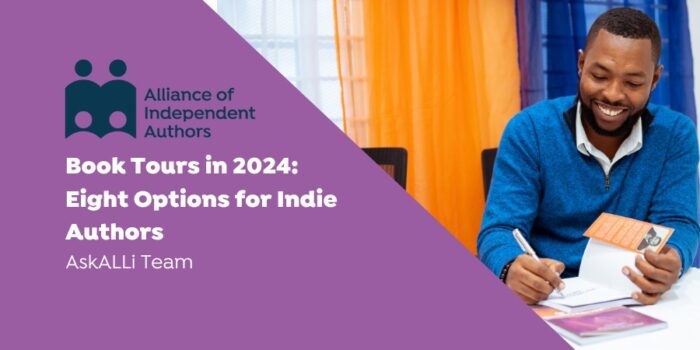
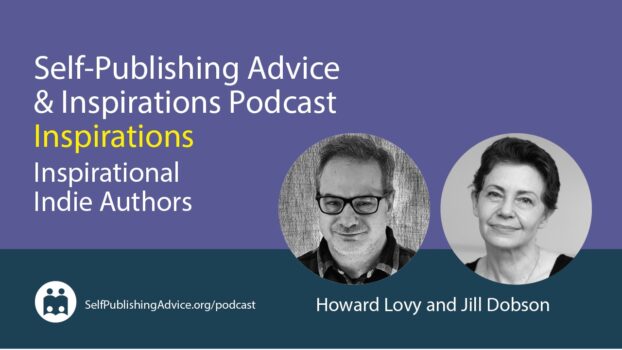
The tips on how to navigate the complex world of book distribution have given me a clearer perspective. Thanks for sharing your wisdom and making the publishing journey a bit less daunting.
This is the first time I know about these processes. Sometimes, readers are only interested in books without paying attention to how hard the publishers have to work to get the books published.